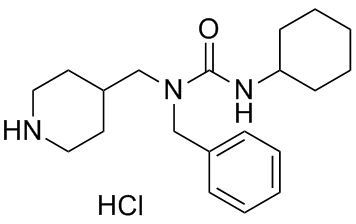TIPS is sometimes performed as a bridge to orthotopic liver transplantation, surgeons prefer that the position of the stent-graft should not interfere with subsequent transplantation. The current clinical practice of OLT basically involves two types of approaches: conventional OLT and piggyback OLT. For the conventional OLT approach, since the recipient’s retrohepatic IVC is resected together with the native liver during the hepatectomy, extending a stent-graft from the TIPS tract into IVC of the bridged recipient should not interfere with subsequent OLT surgery. In contrast, for the piggyback OLT approach, the donor liver is transplanted with a short segment of the donor IVC, which is then directly anastomosed to the main hepatic vein confluence of the recipient. Since the piggyback technique is the most widely used liver transplant surgery around the world to date, it is ideal for OLT that the main hepatic veins of the bridged recipients are preserved with no extension of the TIPS stent-grafts into IVC. Motexafin gadolinium, a gadolinium texaphyrin analog, is primarily designed as an intracellularly localized radiosensitizer. Its mechanism of action is oxidation of intracellular reducing molecules and acting as a direct inhibitor of mammalian ribonucleotide reductase, which is the the enzyme responsible for maintaining a balanced supply of deoxyribonucleotides required for DNA synthesis and repair and playing a critical role in cell proliferation. Moreover, MGd can produce red fluorescence when stimulated by blue light, and, thus, can be tracked under fluorescence microscopy. These characteristics of MGd encouraged us to use it as a promising agent for both MRI-monitored intra-shunt local MGd delivery and inhibiting the proliferation of venous SMCs. To address above mentioned clinical problem, we explored a novel method to prevent hepatic venous outflow stenosis following TIPS creation. In this study, we investigated a technique of MRIguided intra-shunt local agent delivery of MGd, which aimed to ultimately inhibit post-TIPS stenosis. The main purpose of this study was to validate the feasibility of using MRI to monitor intrashunt local delivery of MGd into shunt-vein walls of TIPS. With covered devices, the hepatic venous outflow of the TIPS tract is the major site of subsequent obstruction. Although the clinical application of covered stent-grafts has improved the primary patency rates after TIPS procedures, the one-year patency was reported to be still limited, even as low  as 38%. In the present study, we specifically focused on the site of the hepatic venous outflow to develop a technique using MRI to monitor the local delivery of therapeutic agents to the shunt-vein walls and thereby improve the long-term patency of TIPS. MRI-guided intervention offers several important advantages. First, MRI affords superior soft tissue distinction compared with other imaging modalities. Second, it allows multiplanar three-dimensional reconstructions and maximum intensity projections with sufficiently good spatial resolution to guide interventions. Third, real-time MRI can be used to guide the procedure and monitor the drug delivery during the intervention itself. Fourth, it avoids radiation exposure compared to conventional X-ray angiography-guided interventions. Thus, in the present study, we selected MR to be the imaging modality to monitor intra-shunt local delivery and distribution of agents during the TIPS procedure.
as 38%. In the present study, we specifically focused on the site of the hepatic venous outflow to develop a technique using MRI to monitor the local delivery of therapeutic agents to the shunt-vein walls and thereby improve the long-term patency of TIPS. MRI-guided intervention offers several important advantages. First, MRI affords superior soft tissue distinction compared with other imaging modalities. Second, it allows multiplanar three-dimensional reconstructions and maximum intensity projections with sufficiently good spatial resolution to guide interventions. Third, real-time MRI can be used to guide the procedure and monitor the drug delivery during the intervention itself. Fourth, it avoids radiation exposure compared to conventional X-ray angiography-guided interventions. Thus, in the present study, we selected MR to be the imaging modality to monitor intra-shunt local delivery and distribution of agents during the TIPS procedure.
Locate customer testimonials of our business’s Variability of MDD and CRHR1 gene is likely to be involved in the antidepressant response in MDD at http://www.repairofdnadamage.com/index.php/2019/02/24/abundant-cbx1-proteins-required-formation-sahf-human-cell/.